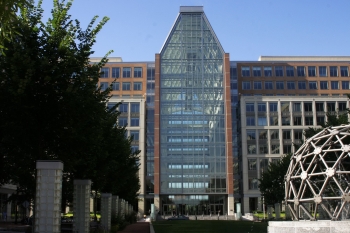Innovation is a principal driver behind our nation’s
economic growth and job creation. The United States Patent and Trademark Office
(USPTO) serves America’s innovators by granting the intellectual property rights they
need to secure investment capital, build companies, and bring their products
and services to the global marketplace. USPTO is an integral partner in
President Obama’s drive to create the foundation for our economic future where
we out-innovate, out-educate, and out-build the rest of the world. USPTO
is proud to play a role in accelerating socially conscious technologies in
emerging fields like alternative fuels, clean energy, and green technology.
Last fall the USPTO extended the deadline for filing
petitions under its Green Technology
Pilot Program. Under the pilot, patent applications involving
reduced greenhouse gas emissions, energy conservation and environmental quality
are accelerated in their review at no cost to the inventor.
Program statistics show that stakeholders participating in
the Green Tech Pilot have obtained patents much more quickly as compared to the
standard examination process. Currently, the average time between
granting of a green technology petition and first office action on the merits
is just 49 days. In many instances, applicants have had their Green
Technology inventions patented in less than one year from the application
filing date.
More than 1,900 petitions have been granted to green
technology patent applicants since the pilot began in December 2009. Of the
1,900 petitions granted so far, USPTO issued the program’s 350th patent for a
configuration of a wind turbine housing on June 28.
By advancing a commitment to building a more sustainable energy
future, USPTO is able to spur additional innovation and promote green collar
jobs that provide our world with alternatives to harmful energy practices. This
ensures that the U.S. is not just the world’s Chief Global Competitor, but also
its Chief Global Citizen.
The ability to develop tools in the name of cause-based
enterprising is an endeavor that may still require investment capital, but
leaves the rest of the world inspired through human capital—and that’s an
example of the sort of nuanced innovation that continues to mark excellence in
American leadership.




